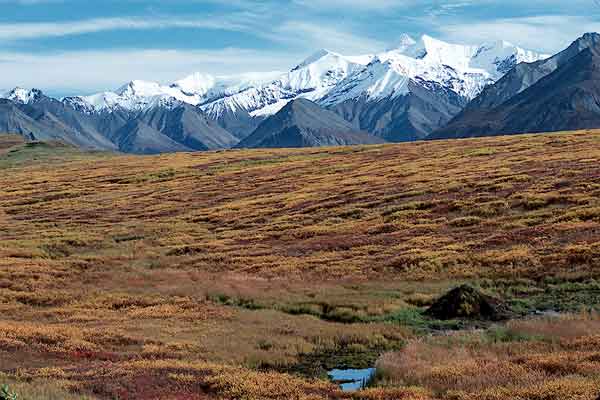

| Updates: |
| 12/01 I have not updated this personal website for so long since I have been busy updating the team website and the final Mission website. Yet, to finalize stuff in my personal website, it's still good to make some more changes. New personal comments added! Click here to check it out. |
| 11/12 I have been frequently updating the Team website, and also found a lot of other information on plants in ANWR. Now I have added entries here on this page. The most encouraging advance is the essay on impacts of oil exploration and drilling on ANWR producers. |
| 10/25 Several progresses: Stuff about fireweed added to the website. Further elaboration on Bigelow Sedges. Information about an endangered species, Aleutian Shield Ferns, found but not yet added to the website. More personal comments added. |
| 10/21 Getting some more information about "sedges" in Alaska. Renewing the website. Not yet quoted the sources of information about mosses and lichens because the book is lent to somebody. Personal comments added. |
| 10/10 Map showing vegetation of ANWR added. Useful website: http://www.absc.usgs.gov/1002/ This website contains many information about wildlife in ANWR. And I was reminded that I should show my REFERENCE and SOURCE OF INFORMATION in all of my research. |
| 10/08 Having received some comments from the team facilitators, my next step will be diverging from mosses and lichens and try to do more research on the other forms of plants in ANWR, with focus on those "shrubs". More importantly, I will start looking into phytoplankton which forms the basis of ecosystems in Arctic sea and coastal shores. |
| 10/07 Further elaboration on the roles of mosses and lichens with my own analysis and thoughts. Concentrated on the details of their roles as basis of food chain, energy flow and nutrient cycles. Bolded are the key sentences in the paragraphs, which help readers to grasp the meaning quickly. NOTE: Many analysis on the mosses and lichens are based on data covering the whole Alaskan region and some covering even the whole Arctic region instead of specifically concerning the ANWR, but such analysis is definitely useful, and it provides information and promotes insights on how the ecosystem in ANWR work and how it is related to the whole Arctic region as a whole. Afterall, ANWR is not an isolated region but interacts with other regions as well. |
| 09/28 Brief introduction to bryophytes and lichens in the context of "Producers in ANWR" was worked out with the help of Ecology of Arctic Environment. |
| 09/25 Reference books borrowed: 1. Ecology of Arctic Environment (Edited by Sarah J. Woodin & Mick Marquiss) 2. Arctic Sea Ice Ecosystem (I.A. Melnikov) 3. Landscape Function and Disturbance in Arctic Tundra, Ecological Studies 120 (James F. Reynolds & John D. Tenhunen (Eds.)) |
| Criteria for A Team 7 Website |
